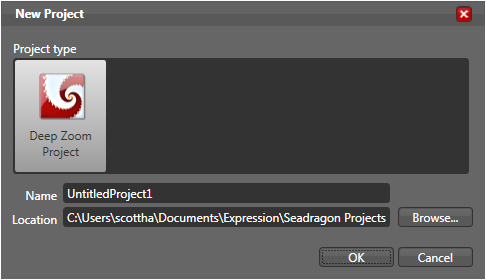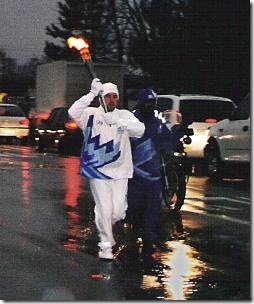Deep Zoom (Seadragon) Silverlight 2 MultiScaleImages at Mix
 One of the cool things seen at Mix 08 today was the Deep Zoom technology. This was originally called Seadragon and came out of the Live Labs research.
One of the cool things seen at Mix 08 today was the Deep Zoom technology. This was originally called Seadragon and came out of the Live Labs research.
You can see it live at the Hard Rock Cafe Memorabilia site. This Silverlight application includes a tiled montage of 512 many-megapixel images, some 10+megapixels, while some are stitched together to sizes upwards of 40-50 megapixels, it seems.
Remember the first 3D games like Sega's OutRun? They seemed 3D, but basically bitmaps were being scaled as you "drove forward" and each graphical asset, like a house, for example, would have a number of pre-rendered versions. Another example are .ico files that have 16x16, 32x32, etc, versions. As the viewer there is one image, but there's multiple resolutions depending on how far in you want to zoom. This is the basic idea behind "multi-scale images."
You can see examples of exceedingly large images, often called "giga-pixel" images all over the web. A great example of zooming using Flash is at Harlem 13-Gigapixels.com. The large Harlem image is 2,045 individual images of 12 megapixels each. The rendering when zooming in is a lot like Google Earth. You zoom into an image of a specific resolution then that first image transitions into a tile of a second image rendered another resolution. You can create these kinds of images with Panorama stitching software like AutoPano.net, and PanoramaFactory. I took a large 50+ megapixel panorama of Ngorongoro Crater in Tanzania that I think would make a good example for this kind of thing. I'll dig it up and make a Deep Zoom example project.
DeepZoom includes an optimized local Silverlight Renderer and XAML control that makes creating these fairly easy. Try it out over at the HardRock Memorabilia site and take specific notice of this guitar I've circled in the picture below.
Zoom in...
And more...into the screw knob in the lower left corner...
You can actually see a reflection of the bench and the camera and Scott Stanfield from Vertigo who's taking the shot of this guitar, reflected in the shiny knob. Vertigo wrote the Hardrock site and they also have a great Deep Zoom Gallery.

You can go download the Preview of the Deep Zoom Composer now. You can see its heritage when you make a new Project and it puts it in a folder called "Seadragon Projects." Here's the Deep Zoom Composer User Guide.
You place a number of pictures (or a large one) on the surface and export the collection. There will be a scene graph XML file created indicating location, size, z-order and aspect ratio of the images.

Then an output directory will be created with folders for each image and, depending on the relative largeness of the source images, a series of tiles generated a number of zoom levels. Here's an example directory structure:

_3.png) See how that image at zoom level 11 has 20 different tiles? They've got to balance many factors to make it all seamless. They're considering how many tiles are needed for that resolution as it relates to a zoom level's need for memory, as well as considering a reasonable number of requests to the server. There's the extreme need for a good user-experience so you want the images to come fast and furious, be easily cached and quickly shown to give the perception of speed. You don't have to sweat any of this stuff, as the multi-resolution tiles stitched together automatically by the client rendered.
See how that image at zoom level 11 has 20 different tiles? They've got to balance many factors to make it all seamless. They're considering how many tiles are needed for that resolution as it relates to a zoom level's need for memory, as well as considering a reasonable number of requests to the server. There's the extreme need for a good user-experience so you want the images to come fast and furious, be easily cached and quickly shown to give the perception of speed. You don't have to sweat any of this stuff, as the multi-resolution tiles stitched together automatically by the client rendered.
After you've exported a project into these files, you create a MultiScale image in XAML like this, referencing a bin file manifest that knows contains info about the directory structure and files:
<MultiScaleImage x:Name="deepZoomObject" Source="foo/info.bin"/>
This gets you the image rendered. To zoom a MultiScaleImage, you call ZoomAboutLogicalPoint:
public void ZoomAboutLogicalPoint(double zoomIncrementFactor, double zoomCenterLogicalX, double zoomCenterLogicalY)
But there's a decent amount of state management that needs to be done as well as deciding how you want things animated, whether or not your image contains sub-images, etc. In the morning I'll take a look at how to hook up JavaScript events like Mouse Wheel Scrolls and do some zooming and panning. Hopefully Vertigo will release their hard-won source code for the canonical example to the community. It's pretty slick.
About Scott
Scott Hanselman is a former professor, former Chief Architect in finance, now speaker, consultant, father, diabetic, and Microsoft employee. He is a failed stand-up comic, a cornrower, and a book author.
About Newsletter










 In a few days the
In a few days the  Yikes, I got an email from HR today that said "Congratulations on your 6th month anniversary at Microsoft!" Has it been that long? Apparently so, although it feels like maybe three months, tops.
Yikes, I got an email from HR today that said "Congratulations on your 6th month anniversary at Microsoft!" Has it been that long? Apparently so, although it feels like maybe three months, tops. I haven't been invited to any evil (or eeeveeel) meetings and haven't found the evil mailing list. As far as I can see Microsoft is less evil as it is unorganized. Within groups, communication is pretty good, but between divisions is trickier because there's
I haven't been invited to any evil (or eeeveeel) meetings and haven't found the evil mailing list. As far as I can see Microsoft is less evil as it is unorganized. Within groups, communication is pretty good, but between divisions is trickier because there's 